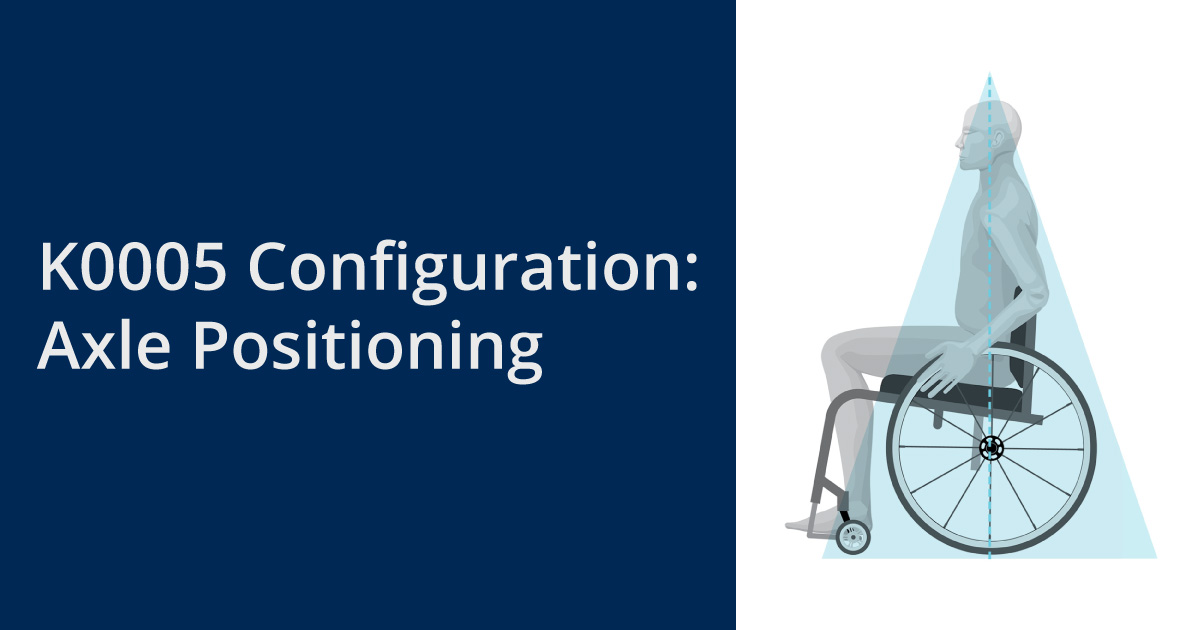We continue looking at configuring a K0005 wheelchair to an individual. So far we've discussed seat-to-floor height, seat slope, ergo seat, foot support-to-seat-length, front frame angle, seat width, front seat width, footrest width, seat sling depth, frame depth, seat back height, and seat-to-back angle. Today we're looking at axle positioning.
Position of the Rear Wheel Axle
The horizontal and vertical positions of the rear wheel axle, have a significant impact on all of the functional characteristics of the wheelchair such as:- stability
- weight distribution
- turning radius
- wheel access
- ease of propulsion
Rear axle position impacts the propulsion style, propulsion efficiency, and access to the environment for the wheelchair user.
When the axle is positioned directly underneath the user’s center of mass, the forces and the repetitions required to propel the chair are reduced.
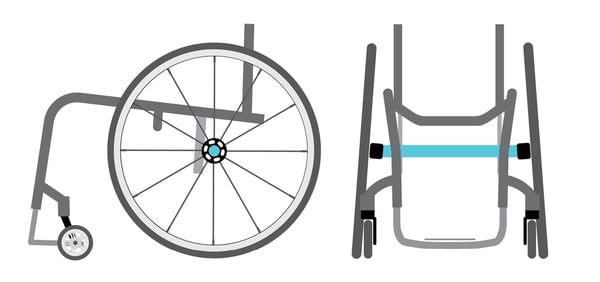
| * Every full-time, long-term wheelchair user should have the rear wheel positioned uniquely for them to prevent injury and ensure full access to their environment. |
Horizontal Axle Positioning
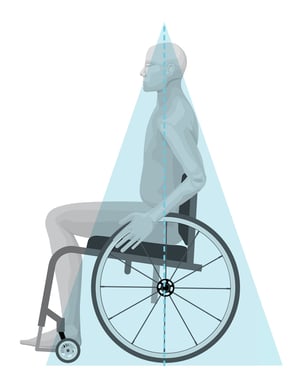 The Center of Gravity (COG) of the wheelchair is the horizontal distance from the front of the back post to the center of the rear axle.
The Center of Gravity (COG) of the wheelchair is the horizontal distance from the front of the back post to the center of the rear axle.
When the axle is under the center of mass of the client, the majority of their weight is on the large rear wheel. Ideally, this is about 80% of their body weight. If weight is not on the rear wheels, it will load the front casters, requiring more force to roll the WC.
Horizontal Axle Measurement
 WC measurement is the horizontal distance from the front of the back post to the center of the rear axle of the wheelchair.
WC measurement is the horizontal distance from the front of the back post to the center of the rear axle of the wheelchair.
|
Forward axle |
Rearward axle |
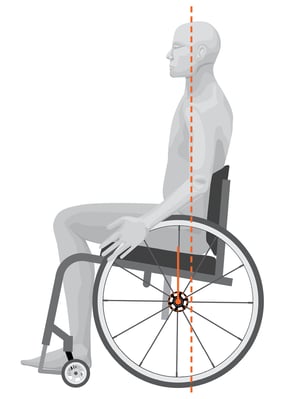 |
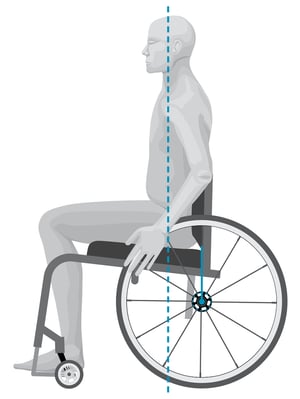 |
| Considerations | Considerations |
|
If too far forward, it increases the risk of wheelchair tipping backwards |
Less efficient upper extremity position to reach rims, could lead to injury over time |
|
Increases the forces necessary to turn the wheelchair |
|
|
Increased rolling resistance makes it harder to propel |
|
|
Increases difficulty of performing a wheelie to maneuver obstacles |
|
|
Increases the turning radius and length of the wheelchair footprint, making it difficult to navigate small spaces |
|
|
*Increases risk of WC tipping forward |
Vertical Axle Positioning
Proper vertical axle position allows for optimal upper extremity position for propulsion. Vertical axle position determines RSTFH measurement and therefore affects seat slope.
|
Lower axle (on axle post) |
Higher axle (on axle post) |
 |
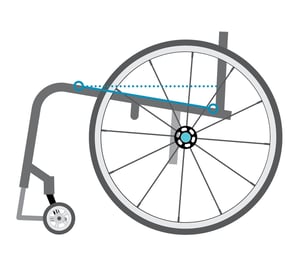 |
Vertical Axle Measurement & Horizontal Axle Measurement
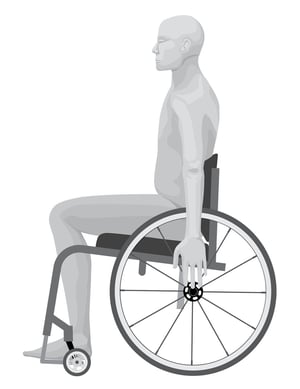 Dropping the arms down at the sides informs how far forward and how far up/down the axle should be placed for the individual in the chair.
Dropping the arms down at the sides informs how far forward and how far up/down the axle should be placed for the individual in the chair.
The vertical position of the axle is determined by how high or low the RSTFH of the wheelchair needs to be. Remember to account for cushion thickness here.
For client's with hand function, finger tips should touch the center of the rear axle when sitting upright with arms to the side. For those with tetraplegia, use the thenar eminence instead as your reference point.
| * Effective / efficient propulsion is affected if the vertical position is too high or low, and it may place the upper extremities in a position that could cause injury over time. |
 Stacey Mullis, OTR/ATP
Stacey Mullis, OTR/ATP
Director of Clinical Marketing
Stacey serves as Director of Clinical Marketing for Permobil. A practicing OTR for over 20 years, she has experience in school-based pediatrics, inpatient rehabilitation, long term care, and home health. With her interest in wheelchair seating and positioning, Stacey engaged the challenges of providing appropriate seating in various clinical settings. She now uses this experience to develop programs and resources to educate clinicians on the principles of seating and wheeled mobility. She is passionate about equipping clinicians and through her previous role as Director of Clinical Education with Comfort Company and now with Permobil she has taught nationally and internationally to increase therapist capacity in this specialty area. Mullis graduated from Western University in London, Ontario, Canada with a BA Linguistics and BSc Occupational Therapy. She is a member of the NCOTA, CTF Executive Board, NRRTs, RESNA, and AOTA.
 Ginger Walls, PT, MS, NCS, ATP/SMS
Ginger Walls, PT, MS, NCS, ATP/SMS
Director of Clinical Sales and Education
Ginger has 25 years of experience as a physical therapist in the area of neuro rehab and wheelchair seating/mobility. She directed the Outpatient therapy clinics and the Seating/Mobility Program at Medstar National Rehabilitation Hospital in Washington, D.C. Additionally, Ginger has provided a variety of continuing education courses and lectures in the area of seating/mobility for many years. She has presented at major industry conferences including ISS, RESNA, and the PVA Summit. Ginger took on the role of Clinical Education Specialist for Permobil in 2015 and was appointed Director of Clinical Sales and Education in 2020.
